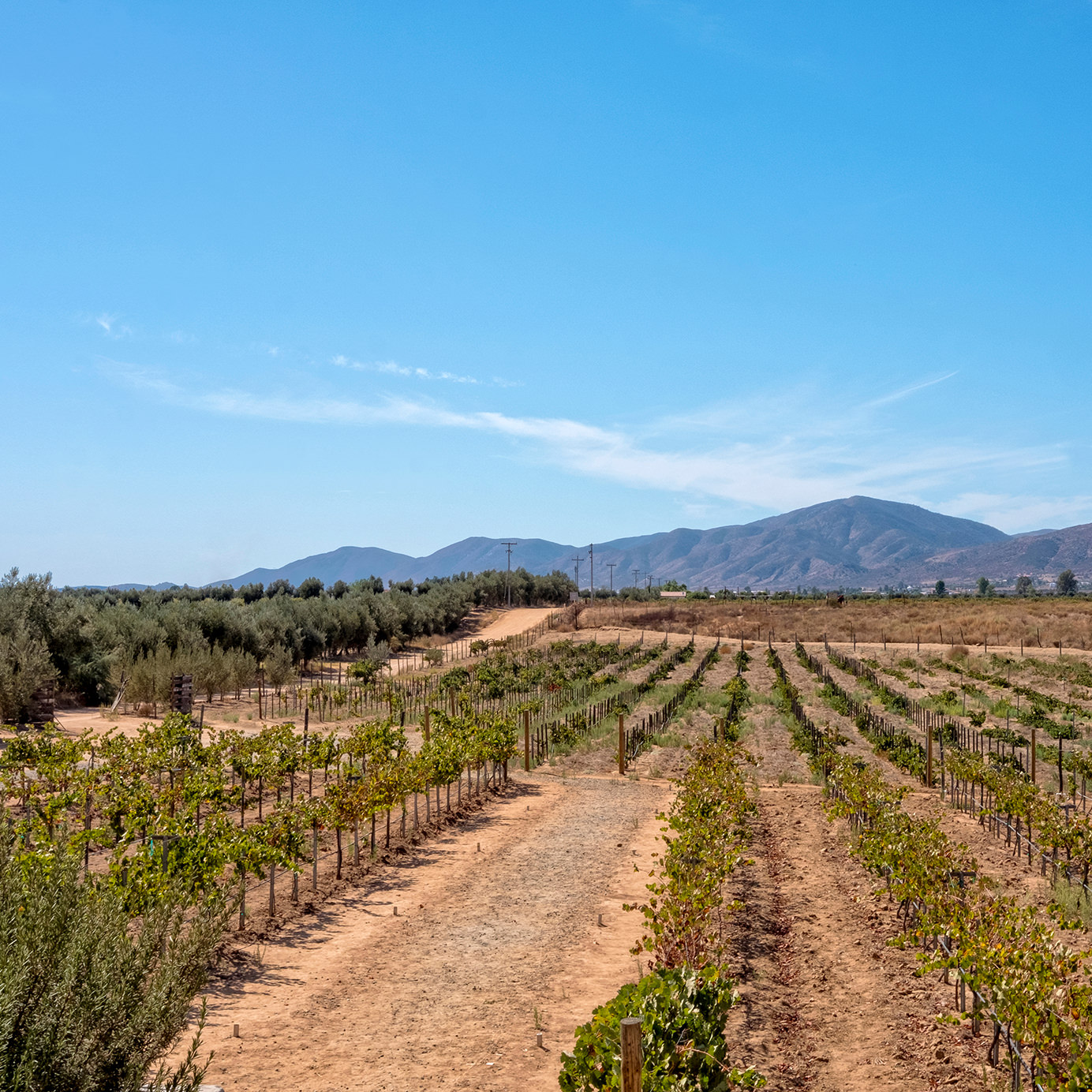When most people think of the West Coast and wine, California’s Napa Valley comes to mind. Followed thereafter by Sonoma and the Willamette Valley, plus maybe Washington’s Columbia and Canada’s Okanagan Valleys. Those especially connected to California might point their attentions southward to Paso Robles, Santa Barbara, and then Temecula.
The hottest wine region on the western front is even further south. Valle de Guadalupe is a village located in Mexico’s Baja California, and it’s attracting national attention for its 100-plus wineries, some of which produce world-class and biodynamic bottles, plus excellent restaurants and boutique hotels.
In 1987 the Mexican wine industry transformed as the result of a legal ruling that permitted foreign wines to cross the Mexican border. The result was a struggle for smaller wineries to compete with foreign labels. Independent local winemakers joined forces and became pioneers of the new wine industry.
Don't Miss A Drop
Get the latest in beer, wine, and cocktail culture sent straight to your inbox.The pale landscape is reminiscent of Joshua Tree, with enormous boulders mimicking artistic installations. The terrain produces an array of varieties from Spain, Portugal, southern France, central and southern Italy, and Greece. Instead of Pinot Noir and Riesling, you’ll find Sangiovese, Nebbiolo, Zinfandel, Vermentino, Viognier, and more.
Valle de Guadalupe’s independent spirit appeals to a certain set of young, stylish wine travelers. A short drive from San Diego, Calif., with three possible border crossings — Tijuana, Tecate, and Otay Mesa — Valle de Guadalupe is an easy long-weekend destination from Southern California.
Plan a trip, beat the crowds, and do the Valle right.
Wineries to Visit
Popular among well-dressed 20-somethings, Decantos is the most Californian-seeming winery in the Valle. The large, grand space has stone-and-metal pillars, floor-to-ceiling glass walls with sweeping views of the Valle, plus couches and communal tables. An outdoor deck with small tables overlooks the lawn, where crowds socialize (and Instagram) on Adirondack chairs. Production here is unique to the Valle, using gravity to eliminate the need for mechanical pumping. Winemakers believe this results in better structure, color, aroma, and flavor. Try the Ruby Cabernet, which has a smoky nose and darkly spiced palate.
At the end of a pothole-ridden dirt road lies Monte Xanic, the oldest vineyard in the Valle. Fresh off a recent renovation, it resembles a state-of-the-art gallery, with private tasting rooms. Named for a Cora Indian word meaning “flower blooming after the first rain,” Monte Xanic produces Cabernet Sauvignon, Malbec, Merlot, Petit Verdot, Sauvignon Blanc, and Semillon, and creates Chenin Blanc, Chardonnay, and Syrah using grapes from regions outside the Valle. The sensationally strong Gran Ricardo is a blend of Cabernet Sauvignon, Merlot, and Petit Verdot.
A happy dog will likely greet you, belly up, when you arrive at Lechuza Vineyard. The gorgeous, appointment-only property is the passion project-turned-successful-business of the late Ray Magnussen and his daughter Kristin, who now owns Lechuza with her husband. Lechuza produces Cabernet Sauvignon, Nebbiolo, Merlot, and Tempranillo.
Where to Eat
Michelin-starred chef Drew Deckman is the brains behind Deckman’s, his eponymous restaurant on the grounds of Mogor Badan Winery. (Mogor Badam produces juicy organic wines and is currently run by Natalia Badan, daughter of Henri Badan, who founded El Mogor farm and winery in 1952.) The restaurant features an al fresco dining room with a backdrop of vineyard and mountain views. As local as it gets, the wine, vegetables, herbs, lamb, olive oil, and eggs are estate grown or produced on the Mogor Ranch. The seafood comes from the Baja Penninsula when possible, the salt is from San Felipe, and the cheeses from neighbors in Guadalupe Valley and Ojos Negros.
Reserve well in advance at Finca Altozano, helmed by by heralded chef Javier Plascencia and arguably the Valle’s hottest restaurant. The farm-to-table menu is served in a cool al fresco space that feels like a mixture of old-school Napa Valley and an open-air barbecue joint.
Corazón de Tierra is an adventure to get to, situated down a series of bumpy dirt roads. It’s worth the trip. Chef Diego Hernandez’s elevated menu makes use of its onsite garden throughout six-course tastings of modern Mexican fare. Corazón de Tierra is joined to boutique B&B Villa del Valle, and to the Vena Cava winery.
Where to Stay
Approachable and stylish, Hacienda Guadalupe is a 16-key boutique hotel. Expect classic Hacienda flair, especially in the open-air lobby with white walls, bright patterns and rugged materials. Breakfasts are spectacular, with octopus omelets, massive fruit plates, French toast, and lattes. Rooms have private terraces or balconies, and the outline of the desert mountains provides the perfect backdrop to a bougainvillea-drenched courtyard.
Hotel Boutique is a modern and refined option with a resort feel. It has a shimmering pool encircled by palm trees and lounge chairs, plus terraces with panoramic views, a restaurant, vineyards, and stables. Guests and visitors can ride horses through the surrounding mountain ranges, shaded oak groves, valleys, and remote pools. Look for the hotel operator, Roxana, and her three charmingly enthusiastic dogs.
